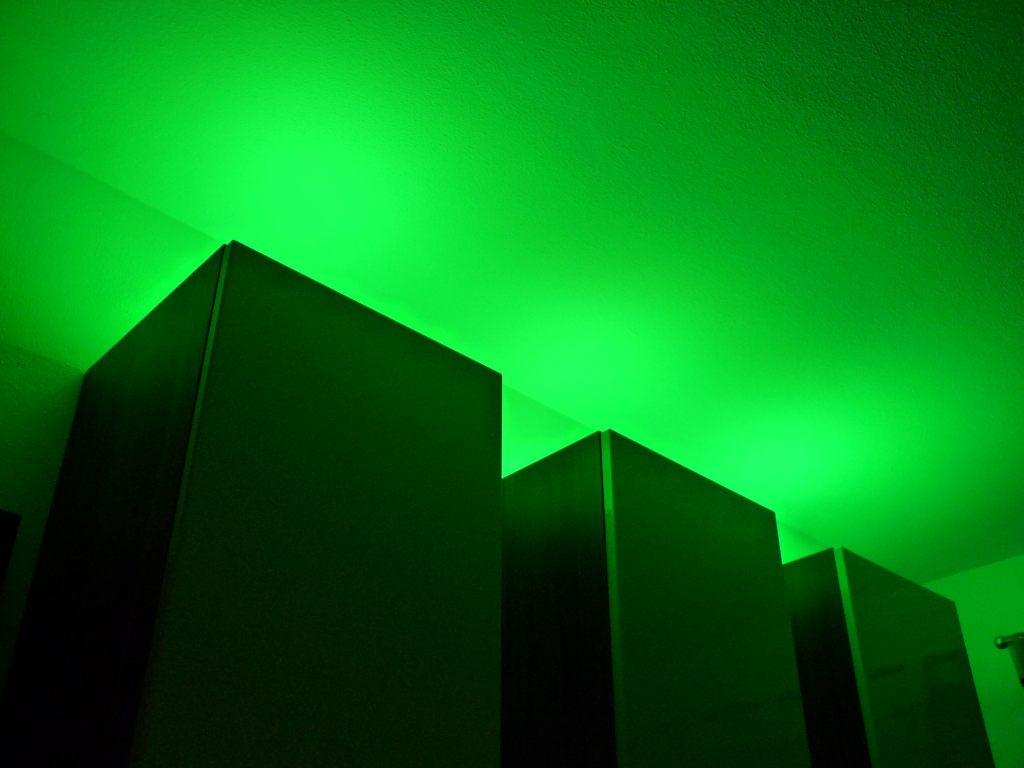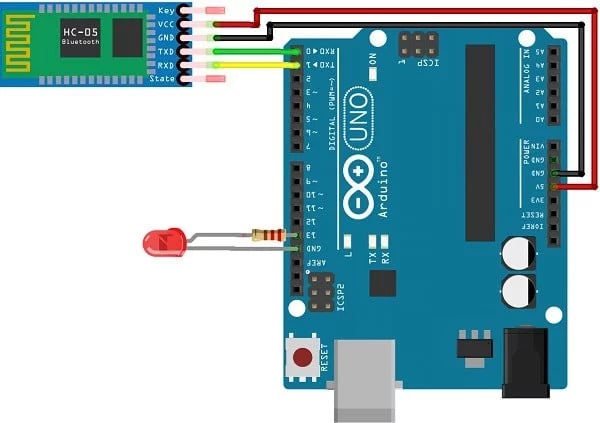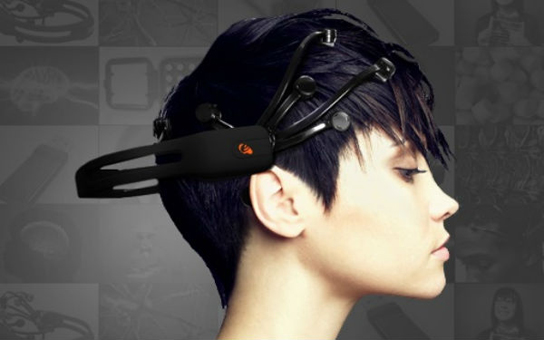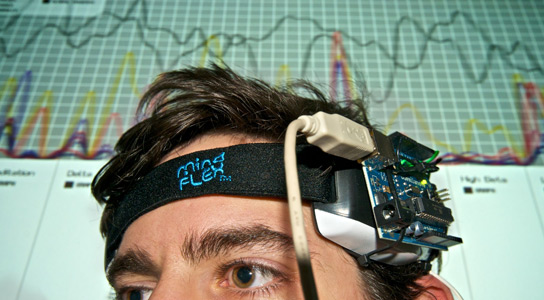Posted by Bridgel Sze on Wednesday, 26 September 2018
On our live split screen video we did a fun activity where Viena pretended to put her hand into my mouth LOL and I also pretended to feed her caifan from my own meal (((:
Posted by Bridgel Sze on Wednesday, 26 September 2018
On our live split screen video we did a fun activity where Viena pretended to put her hand into my mouth LOL and I also pretended to feed her caifan from my own meal (((:
After my DOW Health research on the EEG, I decided that I was interested to discover more about how EEG works. I had discovered some other installation/artworks apart from Mind Pilot which make use of EEG. One of them is Eunoia II by Lisa Park, in which the artist makes use of EEG to control pools of water:
My Idea:
I decided to do something which is more design based which can solve some real world problems. Something which I researched on that EEG can be very useful for is in helping people with obtaining a state of mental relaxation, as it is able to detect whether a person is in a relaxed state of mind or not.

My idea is to create an ambient light which is used for meditation purposes in order to set the mood for someone to relax. According to my research, the colour of ambient light affects the emotional state of a person and hence can be a useful tool in meditation practices. Different colour lights can be adjusted according to the state of mind of the user, whether they are in a meditative state or not. I am also looking into whether the changing of the colour of lights can be triggered manually by blinking fast a certain number of times.
Medium: Arduino and EEG
I have rented an EEG from the film store and started playing with it. LP is right about it in the aspect that it does have certain limitation, for example since it is paired with bluetooth and my phone the connection at times does not work too well. How is works is that is allegedly measures 3 things, namely Attention, Meditation and Blinking. From my own experience I find that the blinking sensor works well and accurately when the device is connected, so perhaps that is the most reliable form of input. For attention and meditation it is measured on a scale of 0-100 and it seems to spike and ebb pretty randomly so I will have to explore further on whether it is really accurately sense attention and meditative state.
To connect the EEG to Arduino is possible, and I have 2 potential methods. The first which I intended to use is to connect the wires from Arduino directly to the EEG but this is not ideal since it’s a borrowed EEG.

Another method which I will try is to use a Bluetooth Module to connect it to Arduino. Since the EEG that I am currently using is Bluetooth connected, and I have been pairing it with my smartphone to use it so far, if I can connect it to Arduino interface through Bluetooth that would save me a lot of time. The Bluetooth Module for Arduino is not pricey and there are tutorials available online so I will do some more research to determine which is the best way to do this!

Posted by Bridgel Sze on Wednesday, 19 September 2018
Ok so like I severely underestimated the amount of time the live video lasted for LOL but I feel that I captured a lot of good stuff so is ok (——-:
I used the share screen option on FB Live to link the live screen to my Mac Photobooth where I used to background function to create a fake moon backdrop. I was inspired by the famous live broadcasted moon landing of Apollo 11 in 1969, which is considered to be the most phenomenal live broadcasted event of human history and was tuned in by 53 million households at the time of broadcast.
My reason for using a backdrop of the moon is that I wanted to contrast how live broadcast is treated today and in the past. Back during the times of Apollo 11, live broadcasted events were a huge and rare thing and were only for extremely significant historical events like the aforementioned moon landing. In my live broadcast I just randomly placed the computer in the lounge and school and people just went up to the screen randomly and interacted with it, not caring that they were being publicly broadcasted live. Some of them were people I didn’t even know and just happen to be passing by (like Ben Slater HAHA), and they had no qualms about just going up to the screen to see themselves on the moon.

I also did a advance post to tell my friends that I was doing a live broadcast and none of them even talked about it and they just used it to roast me and the hole in the head on the photo but some people did take heed of the post and came at the stated timing to join the live stream (thanks Shaf ((((:)



Telematic Dreaming by Paul Sermon is a video-based installation first produced in 1992.
Randall Packer describes Third Space as a space where both physical and imaginary or mental worlds collide, coming together into a network space which can be inhabited by multiple users. In the case of Telematic Dreaming, I would argue that the “third space” exists not as a place where the physical and mental worlds are combined, but rather a place where the 2 aforementioned worlds can be temporarily forgotten.

To highlight my point, we can contrast Telematic Dreaming against the installation Hole in Space which was discussed several weeks back. In HIS, the third space is taken to the extreme in terms of the sheer number of participants who are roped into it. It is evidently very much in line with Packer’s interpretation of a third space, with his definition of it being a communal and shared space among multitudes of people from differing backgrounds. In contrast, as per Sermon’s synopsis, Telematic Dreaming aims to put two strangers into a very private and intimate setting, which is only possible through the following factors of the installation:
In my opinion this seems to be different from Packer’s interpretation of the third space. To me, Telematic Dreaming seems to exist in a fourth space, separate from what Packer described; in this space, everything ceases to exist apart from the moment shared between the 2 participants, leaving them with a unique experience which cannot be recreated in any other setting. Perhaps the fourth space exists as an offshoot of the third space, or it is something which we will need to explore further as artists to understand and define.

Posted by Bridgel Sze on Thursday, 6 September 2018
For this micro-project I decided to just do a quick live video on the spot while in class. It is a parody of the artwork “The Big Kiss” by Annie Abrahams. Basically by positioning myself and different people in the room at different places in the frame I pretended to “kiss” or interact with them, and at the end I allowed the audience to make requests for who they would like me to interact with:



Electroencephalography (EEG) headsets might look like mind-control devices but that’s not exactly what they are. It’s a device which attaches electrodes to a person’s head to measure the electrical signals produced by brain signals below the scalp. So basically it allows us to turn brain signals into a digital input. It allows doctors to detect abnormalities in brain wave activity, to spot things like seizures and other neurological disorders. It can also be used for other medical purposes such as helping patients relax or meditate.

In recent years, tinkerers and artists have started to appropriate EEG headsets to use as a way to control technology and devices. As seen above, EEG can be hooked up to Arduino in order to input the values obtained from the EEG into a computer and use in other devices or installations. So while it was initially invented to be a medical device, its uses have now expanded beyond its initial intention and it can now be used for a wide range of devices and purposes.
Personally, I think that this is very exciting as it means that we now have a whole new way to control devices, rather than just the usual through movement or touch or the 5 senses. It is the closest thing that we currently have to “mind-controlled” devices. Mobility wise it will also be useful for people with handicaps or paralysis. If their household devices can be controlled by brain waves, the range of activity and motion for these disable people can be greatly increased. This is a huge technological advancement and I am excited to see more devices which make use of EEG being invented and perhaps even get to try my hand at making use of EEG technology some day.
Of course, there are limitations to EEG as well. Because of the nature of the EEG device which is more or less mind-controlled, many people are misled into thinking it is a mind reading device and many EEG incorrectly market themselves as mind-reading machines when it is really just sensing electrical impulses. Hardware wise there is also room for improvement as current EEGs are not super effective hence are affected by factors such as the user’s hair or oil on the scalp. It can also be confused by external electrical impulses from nearby objects. There is also the possibility of confidentiality and privacy breach with these devices as scientists have discovered that it is possible to obtain someone’s private information such as credit card number and date of birth using EEG.

Something which I am looking forward to which involves EEG is the above installation, called Mind Pilot which is going to be exhibited at this year’s London Design Festival in a few days. The movement of the balloon shown in the above picture is mind-controlled by EEG, hence it is interactive for audience who can take part in moving the object using nothing but their brain. When I found out about this installation I was very shocked as I didn’t even know it was possible to do such a thing and it is what inspired me to do more research about EEG technology and how it can be incorporated into interactive device or installation.
For more light-hearted uses, I think it could be interesting to use the EEG device for interactive games or generative artworks. Even simple games like ping-pong could be very fun and interesting for the audience if it were to be played via mind-control. It could also be an interactive artwork where the user could do some kind of drawing using nothing but their mind.
I think the EEG is a very exciting device to use and I will look into how I could possibly obtain one to use in my future projects. I think that many medical devices have a great potential if it were to be used for different uses such as in artwork and engineering and I’m excited to see more of such things come up in the future!